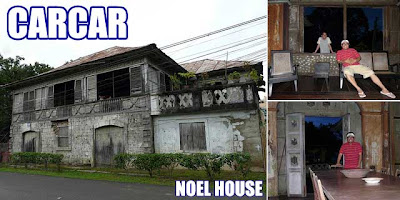Cold and cloudy this morning. To get going I turned on Georges Moustakis on the stereo and made the bed, lured by the promise of McDonald's Sausage Biscuit with Egg and, I can't help it, a small decaf. What makes us eat and crave and eat McDonald's "meals"?
The biscuit, just the right shade of white to remind us of the luxury of rich, white flour, but not too white to suggest that this is healthy, too. Just the right amount of saltiness, and the texture is halfway between crumbly, tender but more substantial than a cake. The omelet is smooth and light, a perfect yellow, not too sweet, a perfect foil to the peppery, chewy sausage patty.
Moustaki is music that comforts like a sausage biscuit. It makes no demands intellectually. It is pleasant yet foreign enough to be interesting. On a cold morning, his raspy, masculine voice brings out the browns and blacks of the color spectrum, glowing and alive unlike the apathy of gray skies.
Reading Moustaki's "stub" on wikipedia intrigued me even more. His parents, Greek Sephardic Jews from Corfu, an island in the Ionian Sea, migrated to Alexandria, Egypt. They apparently spoke Italian at home but so loved French culture that they sent their children to French schools. In 1951, Moustaki moved to Paris, fell in love with the music of Georges Brassens, changed his name to Georges Moustaki (from Yussef Mustacchi) and began a successful career writing and singing songs in seven languages including Italian, French, Greek, Spanish and Arabic. He is a European singer, the language of his songs a short history of Mediterranean culture.
Materialism is preoccupation with the material world, with things, rather than with intellectual or spiritual concepts. Food might be thought of as materialistic, just like clothing, houses, cars, "real" estate, even books, dishes, stereos and televisions. It was the lure of oral sensations that got me out of bed this morning but the story of Moustaki, Corfu and Mediterranean cultures that now engages me wholly. We are, after all, body and soul, soul being that part of us that hovers in and about our corporal selves, our thoughts, aspirations, beliefs, our intellectual and spiritual experiences.
Experience itself is mental. Though it draws from our bodily sensations, experience derives more from contributions of the mind than from the material things our body senses in the moment. I didn't just consume a Sausage Biscuit with Egg. My experience comprises the taste and chewing sensations as well as the associations the mind makes of McDonald's creation.
This is creativity. Creativity transforms base sensory stimuli into culinary marvels, art and the cinematic experience. The body and its senses are nothing without the experience the mind weaves about them, transforming their matter into some "thing" more sustaining, more enriching, even ultimately animating (from anima, soul); transforming existence into life.
McMuffin might induce me out of the house but it is the pleasure of thinking and the chance to write something better than the taste of it in my mouth that makes me come again and again. The words on the computer page are mere shadows of what passes through the mind. Food sensations are pleasurable but not as pleasurable as the appearance of certain thoughts in the mind, certain conjunctions of ideas, the alchemical distillation of concepts, the destruction and creation of whole worlds while McDonald's cleverly marketing wrappers and try liners lie ignored on the table beside me.
The computer like its maker is matter and thought, even spirit. In Christian dogma, on the day of resurrection, we shall all rise from the earth, body and soul together again and forever. Maybe there are not two here but only one, always and only One.
I searched through my photographs of Corfu ( Kérkira to the Greeks). The first is an image of the Liston Arcade, built by the French during Napoleon's occupation, the second of Mouse Island (Pondikonissi). My sister and I stayed at a hotel on a cliff overlooking the island monastery. How long ago that now seems! On our last evening there, we navigated a small path down to the seashore, visited the monastery and had dinner at the restaurant at the foot of the ramp. I remembered there were several cats about, under the deck, by the water, suddenly appearing from the kitchen. The food was heavenly though I don't remember now what we ate!
See the full gallery on posterous









































